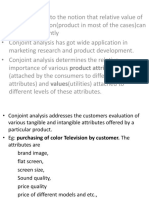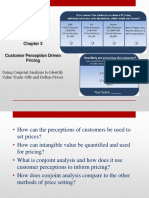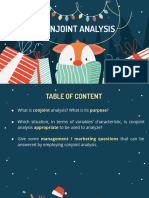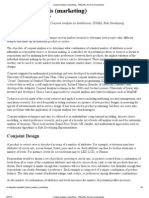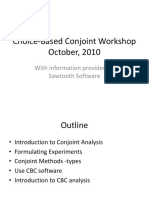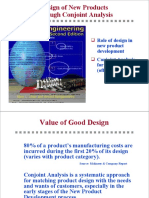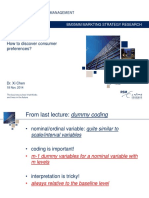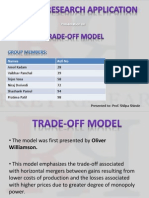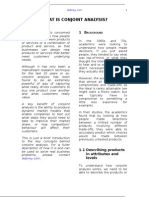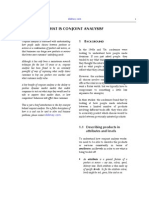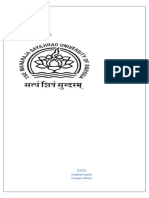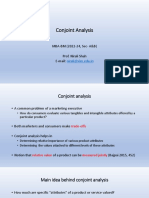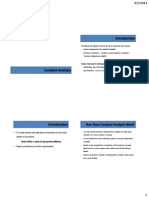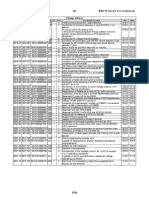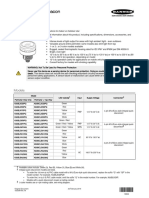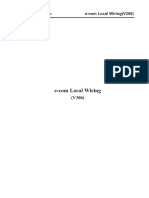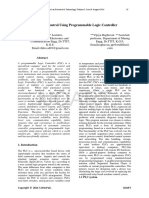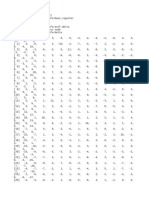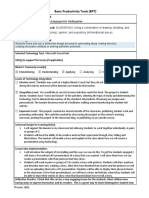0% found this document useful (0 votes)
69 views16 pagesMultivariate Data Analysis
Conjoint analysis is a statistical technique used in market research to determine how people value different features that make up a product or service. It works by asking people to make choices between hypothetical products defined by sets of attributes at different levels. This allows researchers to calculate part-worth utilities that show the relative importance and value that consumers associate with each attribute level and determine drivers of preferences. Conjoint analysis can be used to identify the most preferred product concept, understand trade-offs people make, segment markets, and predict choice. While it provides insights into consumer decision making, conjoint analysis has limitations such as complexity, oversimplification by respondents, and not accounting for purchase quantities.
Uploaded by
Tushar SrivastavaCopyright
© Attribution Non-Commercial (BY-NC)
We take content rights seriously. If you suspect this is your content, claim it here.
Available Formats
Download as PPTX, PDF, TXT or read online on Scribd
0% found this document useful (0 votes)
69 views16 pagesMultivariate Data Analysis
Conjoint analysis is a statistical technique used in market research to determine how people value different features that make up a product or service. It works by asking people to make choices between hypothetical products defined by sets of attributes at different levels. This allows researchers to calculate part-worth utilities that show the relative importance and value that consumers associate with each attribute level and determine drivers of preferences. Conjoint analysis can be used to identify the most preferred product concept, understand trade-offs people make, segment markets, and predict choice. While it provides insights into consumer decision making, conjoint analysis has limitations such as complexity, oversimplification by respondents, and not accounting for purchase quantities.
Uploaded by
Tushar SrivastavaCopyright
© Attribution Non-Commercial (BY-NC)
We take content rights seriously. If you suspect this is your content, claim it here.
Available Formats
Download as PPTX, PDF, TXT or read online on Scribd
/ 16







